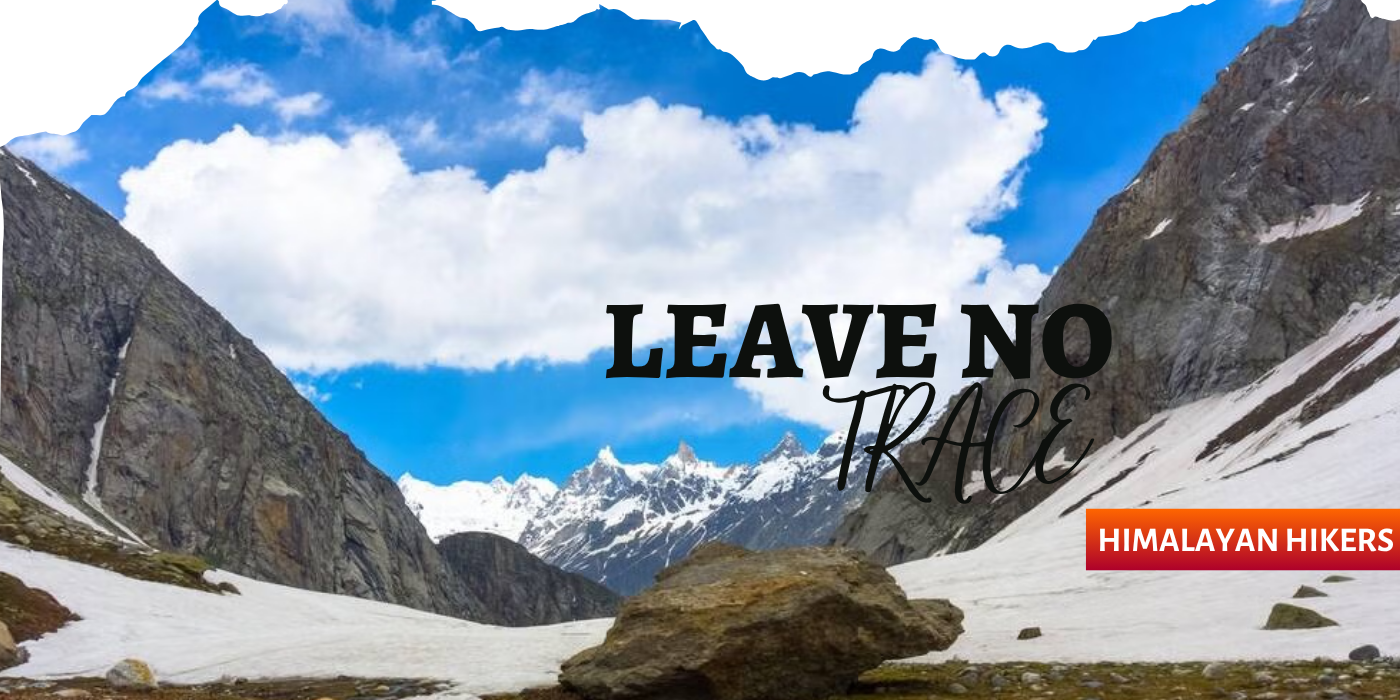
Leave No Trace Principles
Leave No Trace Principles for Your Trekking: How to Protect Nature Without Leaving a Mark
“Leave nothing but footprints, take nothing but memories, kill nothing but time.” A morning in the Himalayas… when the sun rises behind the mountains, and a cool breeze brushes your cheeks — it feels like the world is a temple. But imagine if someone leaves plastic waste there, plays loud music, or lights a fire under the trees?
Trekking is a journey that brings us closer to nature, but every trekker also has the responsibility to be a protector of nature — not its burden.
That’s why responsible trekkers worldwide follow —
The 7 Leave No Trace (LNT) Principles
These aren’t just rules; they are a mountain code of ethics.
Plan Ahead and Prepare – Thoughtful Steps from the Start
Many say — “We’ll decide when we get there.”
But mountains are unpredictable. Without proper planning, you can take wrong trails, break local rules, or waste resources.
Example:
You need a permit to visit the Valley of Flowers.
You need proper gear for the Sar Pass trek. Without planning, you might harm nature or put yourself at risk.
Travel and Camp on Durable Surfaces – Stick to the Trails
Taking shortcuts or camping on fragile meadows wounds nature.
Once your footprint lands in an alpine zone, the grass may never grow back.
Example:
On the Hampta Pass trek, guides always say, “Don’t stray off the trail.” Because off-trail walking increases soil erosion.
Dispose of Waste Properly – Your Trash, Your Responsibility
A single wrapper, cigarette butt, or tissue can remain in nature for 100 years.
Every trekker must pack out all waste, including sanitary waste, in zip-lock bags.
Tip:
Carry an “Eco Bag” and collect all small trash items in it.
“What you bring, take back with you.”
Leave What You Find – Don’t Take Anything from Nature
You might see a rare flower like Brahma Kamal or a special rock.
But if everyone picks a flower, what will remain?
Nature is meant to be seen, not collected for your shelf.
Example:
In the Kedarkantha forest, you’ll find pine cones. Guides say — “Take photos, but don’t take them.”
Minimize Campfire Impact – Learn to Avoid Fires
Mountains have dry grass, leaves, and wood. A small spark can start a forest fire. Campfires cause pollution, deforestation, and disturb wildlife.
Tip:
Use a butane or propane stove instead. It reduces the risk of forest fires.
Respect Wildlife – Don’t Treat Forest Animals as Pets
Monkeys may look cute or foxes photogenic. But feeding or approaching them disrupts their natural instincts.
Example:
On the Tarsar Marsar trek, you’ll see Himalayan marmots. Guides say: “Just watch them, don’t feed them.”
Be Considerate of Others – Trekking Means Peace, Not Noise
Loud music, shouting, or disrespectful behavior ruins other trekkers’ experience.
In the mountains, silence speaks louder than words.
Tip:
On narrow trails, always give way to those coming downhill first. It’s an unwritten rule.
Leave No Trace = True Respect for Mountains
Every time you complete a trek, a new story is created.
But that story is beautiful only if you love nature as much as you take from it.
Your Eco-Friendly Trekking Checklist:
-
Reusable water bottle, lunch box, cutlery
-
Zip-lock bags for waste collection
-
Lightweight, low-impact gear
-
Only photos, no picking flowers
-
No plastics or disposables
-
Responsible trekking operator (e.g. Himalayan Hikers)
Final Words: Every Trek Is a Promise
Trekking isn’t just an adventure — it’s a promise.
A promise that we will take only memories from the mountains, not their scars.
Every step you take leaves a footprint. Make sure it blends into nature, not fights against it.

